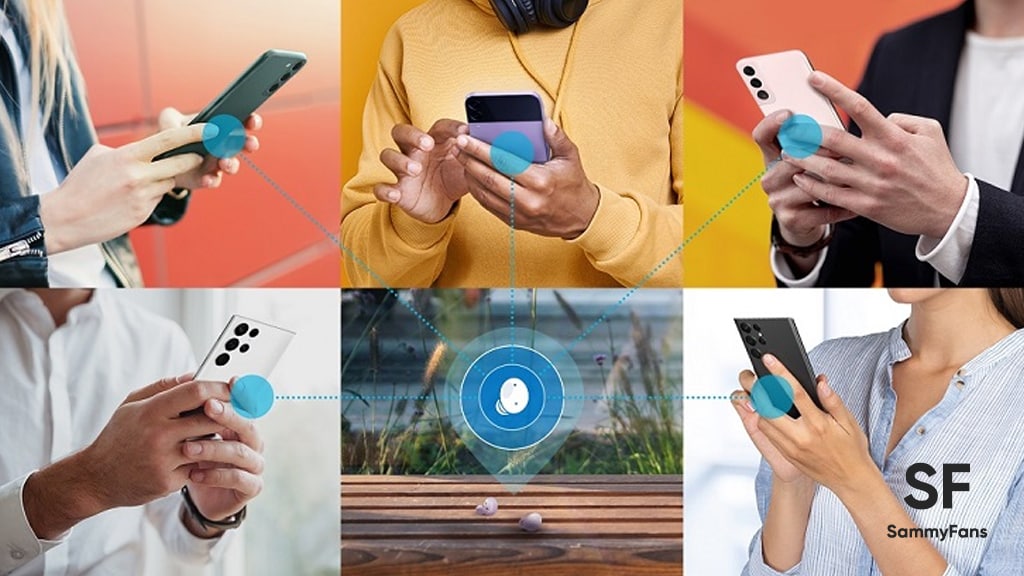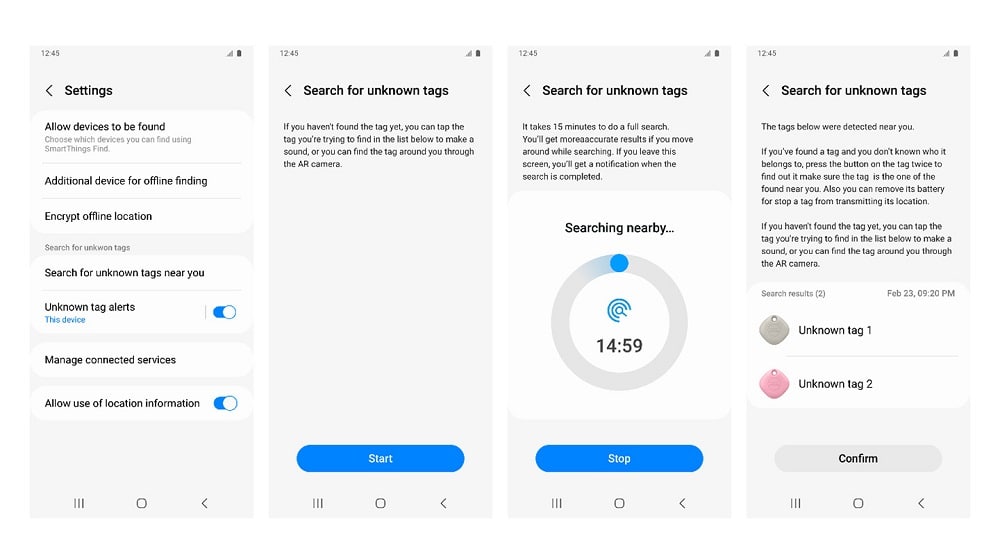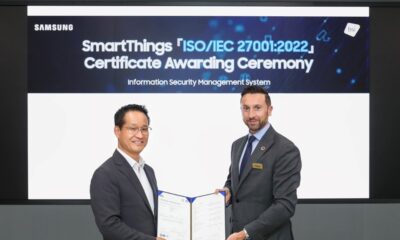News
Samsung SmartThings Find reaches 200 million nodes

On July 14, Samsung disclosed that the rapidly growing SmartThings Find service is now comprised of more than 200 million find nodes working to help users locate their misplaced devices. FYI, Find nodes are devices that have been registered on the SmartThings Find service for location tracking purposes.
Samsung’s SmartThings Find functionality lets Samsung consumers quickly locate registered Galaxy devices including smartphones, tablets, smartwatches and earbuds. In addition, it can also locate your personal things like keys and wallet after attaching them with Galaxy SmartTag or SmartTag+.
Samsung Presiden’s statement:
“We’re proud and excited to see the rapid growth of the SmartThings Find service. In less than two years, 200 million devices have opted in to help fellow Samsung Galaxy users find their misplaced devices — making Smartthings one of the fastest growing services at Samsung.”

SmartThings Find
It’s worth mentioning that the SmartThings Find uses futuristic technologies including Bluetooth Low Energy and ultra-wideband to make item locating possible. In case the device that you want to locate is out of the range of your phone, other nearby Samsung users who have opted into SmartThings Find can help you locate it.
As a top priority of ensuring the security of sensitive information like location data, SmartThings Find encrypts user data and keeps it protected by Samsung Knox. SmartThings Find also helps users identify unknown SmartTags that follow them for a certain period of time.
How to install
If you’ve lost track of a device, just open the SmartThings app to use SmartThings Find. Your devices will appear on a map so you can easily keep an eye on their locations. To download and install SmartThings Find, just navigate to and open the SmartThings app.
Then, tap the Life tab and tap the new SmartThings Find card. If prompted, tap Download to download the necessary add-ons. If needed, tap Agree. Once done, select the devices you’d like to see on the location map, and then tap Done.
You’ll see a map containing the devices you selected. Swipe up from the bottom of the screen to view detailed information about your devices, such as their approximate locations. Finally, select a specific device by tapping it on the map.

| Source |
News
Here’s why Google Messages replaced Samsung Messages on Galaxy devices

Samsung’s latest foldable phones come with Google Messages by default. The company has now revealed the reason behind this move on Galaxy devices. Samsung says Google Messages replaced Messages to foster RCS adoption.
According to AndroidAuthority, a source explained Samsung’s decision to switch to Google Messages as the default messaging app. The recently released Galaxy Z Flip 6 and Z Fold 6 come with Google Messages with RCS enabled by default.
Looks like promoting Google Messages on Galaxy devices will boost RCS adoption. Samsung Messages isn’t already installed on newer phones. However, one’s stopping you from getting it on your Galaxy from the Galaxy Store.
While many apps support the RCS feature, Google Messages offer the best user experience. Making it a default messaging app is an effort to boost the adoption of RCS tech. Apple is also preparing to bring RCS chat functionality to iMessage for iPhones.
What Samsung source said:
- Even if messaging apps follow the RCS standard, the availability may be limited depending on which app the other party uses. That’s why we decided to make Google Messages the common messaging platform, allowing Galaxy users to communicate more freely. This also enables a messaging app to respond to changes of the RCS standard more quickly and efficiently.
Previously, Samsung devices launched in the US came with two messaging apps. This time, the company has removed the Samsung Messages. During the first setup, users are notified that Google Messages is the default messaging application.
News
Samsung SmartThings gets ISO 27001 certified

Samsung SmartThings gained the international standard ISO/IEC 27001:2022 certification. The company has officially announced this major development in its global connected living platform.
SmartThings received ISO/IEC 27001:2022 certification for information security management systems. Certification reiterates that the SmartThings Cloud operates per international standards.
To be certified, a company has to meet the standard across a total of 123 detailed items, including policies for information security, access control for information assets, and incident response.
SmartThings receiving the ISO 27001 certification is the result of our sustained focus on the protection of information in a hyper-connected world with exponentially increasing intelligence.
Seungbum Choi, Executive Vice President and Head of Device Platform Center at Samsung Electronics said “this is just another step in our drive to fortify the platform’s security. We will continue to find new ways to ensure that SmartThings’ personalized services are provided even more safely.”

BSI Prez says that they have recognized that the operation capability and security level of Samsung SmartThings is excellent. It will further boost trust in the SmartThings platform and strengthen business competitiveness.
ISO 27001 is the leading global standard for ISMSs and was established by the International Organization for Standardization. It provides companies with guidance to manage the risks to information assets systematically and achieve information protection goals.
News
Dr.diary fuels Samsung Health with glycated hemoglobin algorithm
Samsung Health app integrated the Dr.diary (Doctor Diary) glycated hemoglobin feature. The blood sugar management platform announced the launch of its glycated hemoglobin estimation functionality on Samsung’s Health application.
According to ETNews, Dr.diary announced the integration of a glycated hemoglobin level feature in Samsung Health. Galaxy users will now be able to check the estimated glycated hemoglobin level provided by Doctor Diary.
To activate the feature, Health app users will have to permit certain conditions of data in the Blood Sugar service. It is worth noting that glycated hemoglobin is a key figure for diabetes diagnosis, which users will find worth using in the Health app.
Established in 2017, Dr.diary is a blood sugar management platform. It analyzes and predicts the changes in glycated hemoglobin using its own algorithm. Earlier this year, the firm secured a patent for “glycated hemoglobin estimation based on blood sugar data table.”
Song Je-yoon, CEO of Doctor Diary, said, “With our predicted glycated hemoglobin level prediction algorithm being installed in Samsung Health, more people will be able to recognize their glycated hemoglobin level and manage their health more efficiently.”

Glycated hemoglobin (HbA1c) is a standardized numerical value of the percentage of hemoglobin, such as hemoglobin, which has been glycated by glucose. Glycated hemoglobin reflects the average blood sugar level over the past 2-3 months.
Samsung Health (with Wear OS Galaxy Watch) users can conveniently check their estimated glycated hemoglobin level within the app and use this information to manage their blood sugar levels through diet and exercise.












